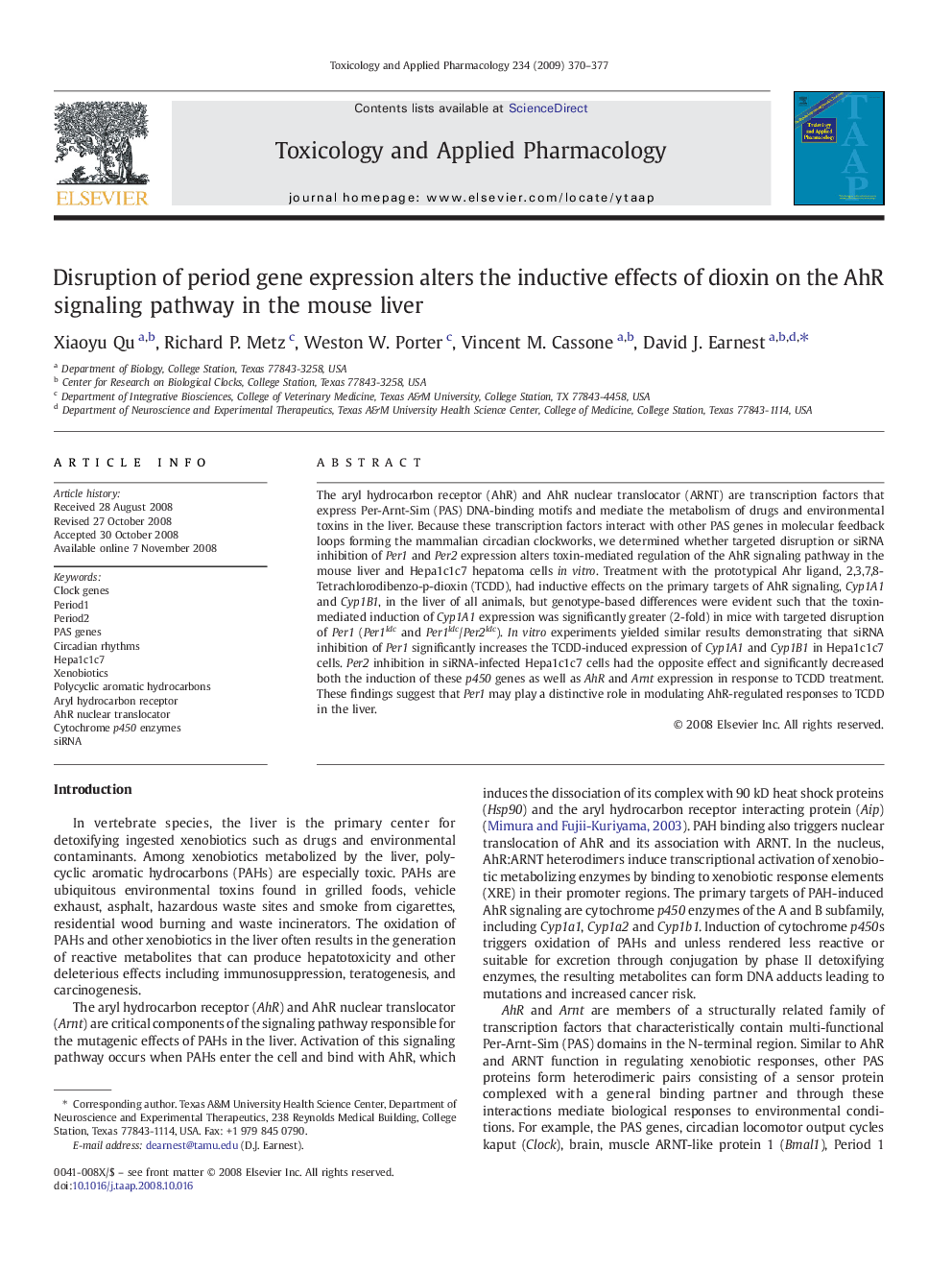| کد مقاله | کد نشریه | سال انتشار | مقاله انگلیسی | نسخه تمام متن |
|---|---|---|---|---|
| 2570712 | 1128598 | 2009 | 8 صفحه PDF | دانلود رایگان |

The aryl hydrocarbon receptor (AhR) and AhR nuclear translocator (ARNT) are transcription factors that express Per-Arnt-Sim (PAS) DNA-binding motifs and mediate the metabolism of drugs and environmental toxins in the liver. Because these transcription factors interact with other PAS genes in molecular feedback loops forming the mammalian circadian clockworks, we determined whether targeted disruption or siRNA inhibition of Per1 and Per2 expression alters toxin-mediated regulation of the AhR signaling pathway in the mouse liver and Hepa1c1c7 hepatoma cells in vitro. Treatment with the prototypical Ahr ligand, 2,3,7,8-Tetrachlorodibenzo-p-dioxin (TCDD), had inductive effects on the primary targets of AhR signaling, Cyp1A1 and Cyp1B1, in the liver of all animals, but genotype-based differences were evident such that the toxin-mediated induction of Cyp1A1 expression was significantly greater (2-fold) in mice with targeted disruption of Per1 (Per1ldc and Per1ldc/Per2ldc). In vitro experiments yielded similar results demonstrating that siRNA inhibition of Per1 significantly increases the TCDD-induced expression of Cyp1A1 and Cyp1B1 in Hepa1c1c7 cells. Per2 inhibition in siRNA-infected Hepa1c1c7 cells had the opposite effect and significantly decreased both the induction of these p450 genes as well as AhR and Arnt expression in response to TCDD treatment. These findings suggest that Per1 may play a distinctive role in modulating AhR-regulated responses to TCDD in the liver.
Journal: Toxicology and Applied Pharmacology - Volume 234, Issue 3, 1 February 2009, Pages 370–377